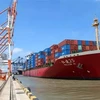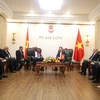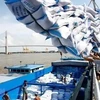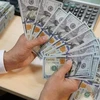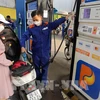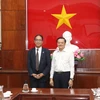Vietnam’s agriculture is entering a new phase to meet requirements in the process of international economic integration. Therefore, applying high-tech to improve efficiency, competitiveness and product quality and meet consumer demand is an urgent task, the Vietnam Economic News reported on August 1.
According to incomplete statistics, the country currently has 29 high-tech agricultural zones in 12 provinces and cities. These agricultural zones have formed development models such as safe vegetable production and flower and ornamental plant growing in Ho Chi Minh City, Bac Ninh and Lam Dong and mushroom production in Vinh Phuc province.
In addition to development models, agricultural zones have also established specialised production areas, dairy processing facilities in Hanoi, Nghe An province and Ho Chi Minh City and tea growing areas based on the Chinese Taipei technology in Thai Nguyen and Lam Dong provinces.
In particular, agricultural zones have actively applied new technology such as greenhouse, net house, nursery and cooling warehouse, contributing to improving productivity and stabilizing prices.
Director of Agricultural and Rural Department under the Central Economics Commission Nguyen Van Tien said that research results and high-tech applications had made important contributions to productivity growth in recent years. However, operations of high-tech agricultural zones have remained limited due to the lack of support mechanisms.
“The selection of models, products and technology has remained unsuitable and costs have remained high, leading to low efficiency. In addition, some high-tech agricultural zones in Hai Phong city and Hanoi have not brought desired efficiency,” Nguyen Van Tien was quoted as saying.
Businesses should consider not only investing in the application of advanced technology into practical production but also promoting strengths in terms of land resources and natural conditions.
Deputy General Director of Agrivina Co., Ltd. Nguyen Van Bao said that although Vietnam has become a member of the International Union for the Protection of New Varieties of Plants (UPOV) since 2006, some businesses and farmers in Lam Dong province have used unoriginal seeds, leading to unfair competition between businesses.
Developing high-tech agriculture in the future should focus on core objectives such as seed selection and the number of businesses and services participating in high-tech agriculture.
Deputy Head of Science, Technology and Environment Department under the Ministry of Agriculture and Rural Development Nguyen Tan Hinh said that the country would strongly develop high-tech agriculture with a focus on the number of businesses and production areas, contributing to increasing high-tech agricultural production value to 10-15 percent of total agricultural production value.-VNA
According to incomplete statistics, the country currently has 29 high-tech agricultural zones in 12 provinces and cities. These agricultural zones have formed development models such as safe vegetable production and flower and ornamental plant growing in Ho Chi Minh City, Bac Ninh and Lam Dong and mushroom production in Vinh Phuc province.
In addition to development models, agricultural zones have also established specialised production areas, dairy processing facilities in Hanoi, Nghe An province and Ho Chi Minh City and tea growing areas based on the Chinese Taipei technology in Thai Nguyen and Lam Dong provinces.
In particular, agricultural zones have actively applied new technology such as greenhouse, net house, nursery and cooling warehouse, contributing to improving productivity and stabilizing prices.
Director of Agricultural and Rural Department under the Central Economics Commission Nguyen Van Tien said that research results and high-tech applications had made important contributions to productivity growth in recent years. However, operations of high-tech agricultural zones have remained limited due to the lack of support mechanisms.
“The selection of models, products and technology has remained unsuitable and costs have remained high, leading to low efficiency. In addition, some high-tech agricultural zones in Hai Phong city and Hanoi have not brought desired efficiency,” Nguyen Van Tien was quoted as saying.
Businesses should consider not only investing in the application of advanced technology into practical production but also promoting strengths in terms of land resources and natural conditions.
Deputy General Director of Agrivina Co., Ltd. Nguyen Van Bao said that although Vietnam has become a member of the International Union for the Protection of New Varieties of Plants (UPOV) since 2006, some businesses and farmers in Lam Dong province have used unoriginal seeds, leading to unfair competition between businesses.
Developing high-tech agriculture in the future should focus on core objectives such as seed selection and the number of businesses and services participating in high-tech agriculture.
Deputy Head of Science, Technology and Environment Department under the Ministry of Agriculture and Rural Development Nguyen Tan Hinh said that the country would strongly develop high-tech agriculture with a focus on the number of businesses and production areas, contributing to increasing high-tech agricultural production value to 10-15 percent of total agricultural production value.-VNA
